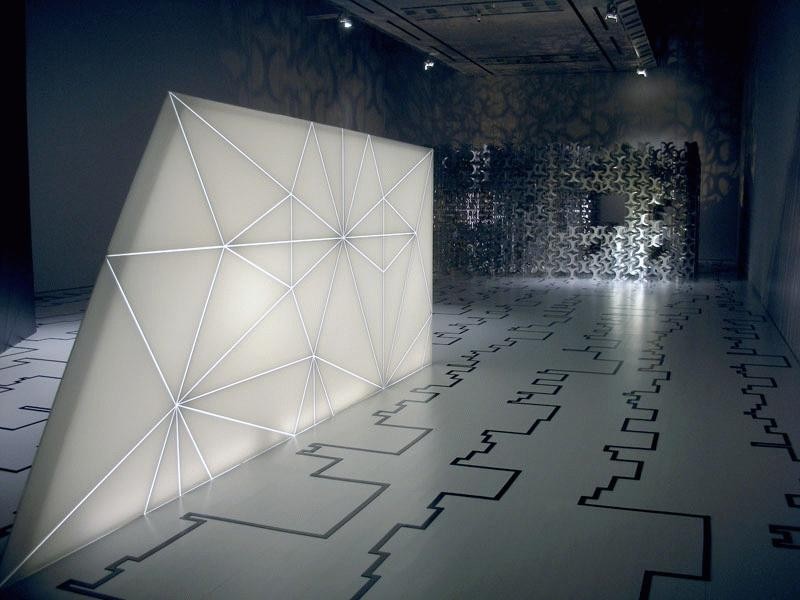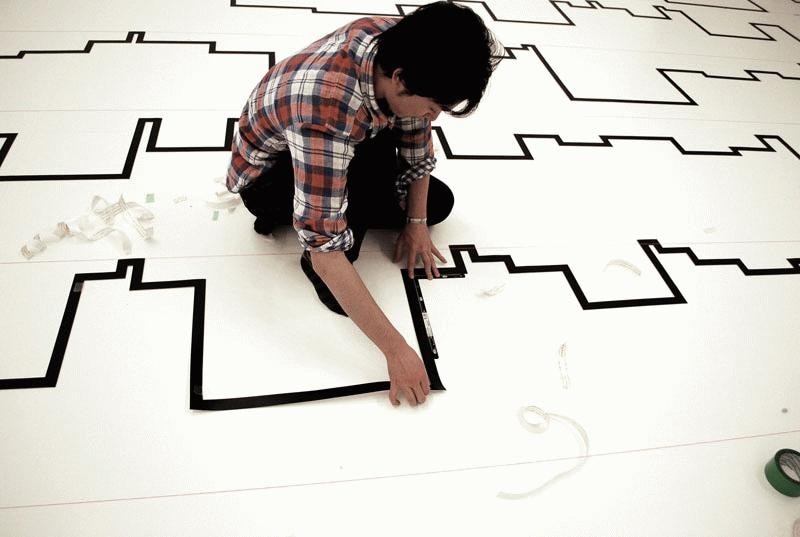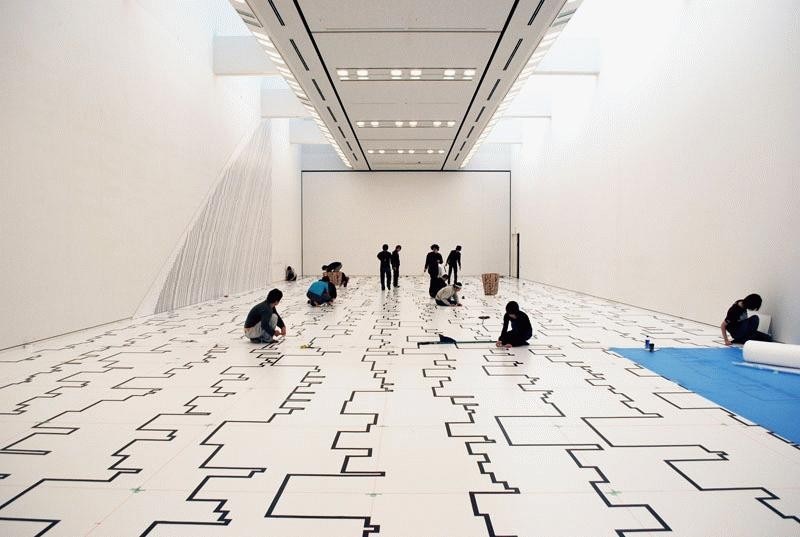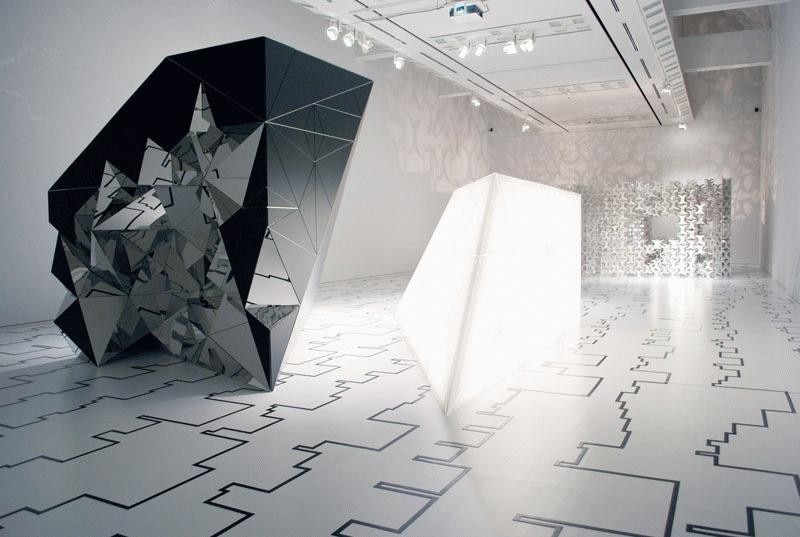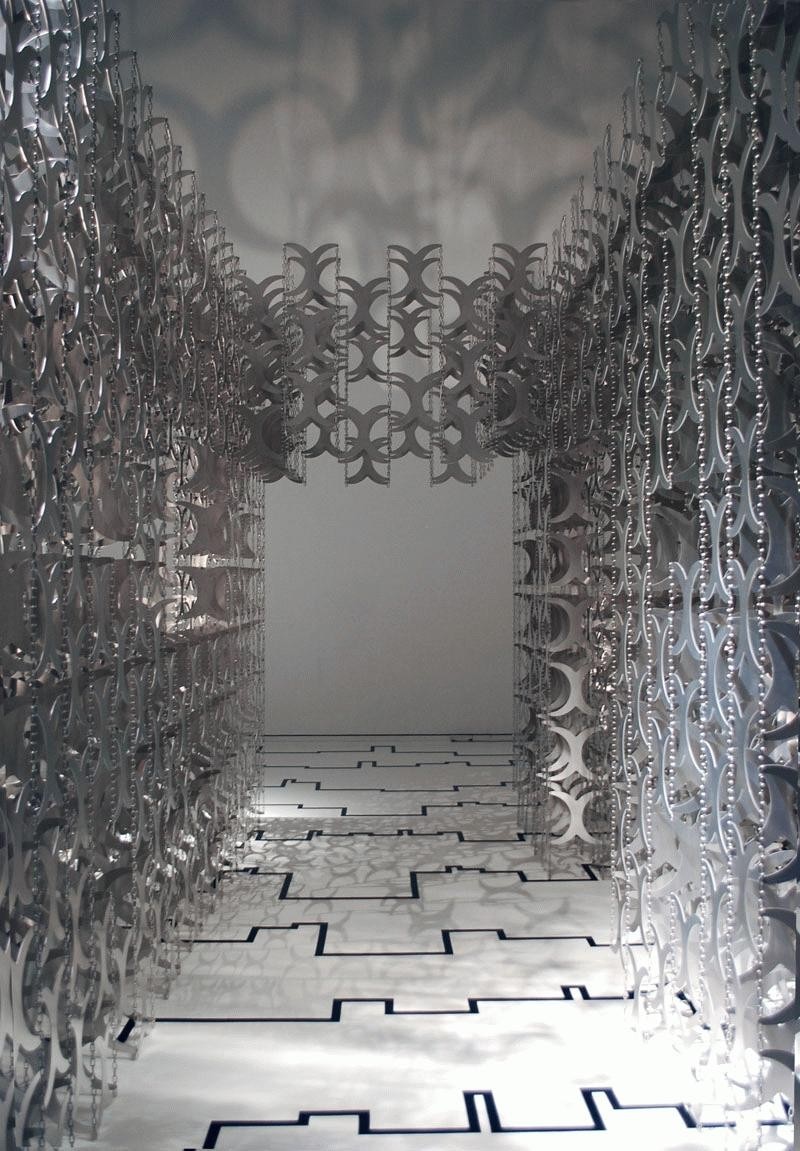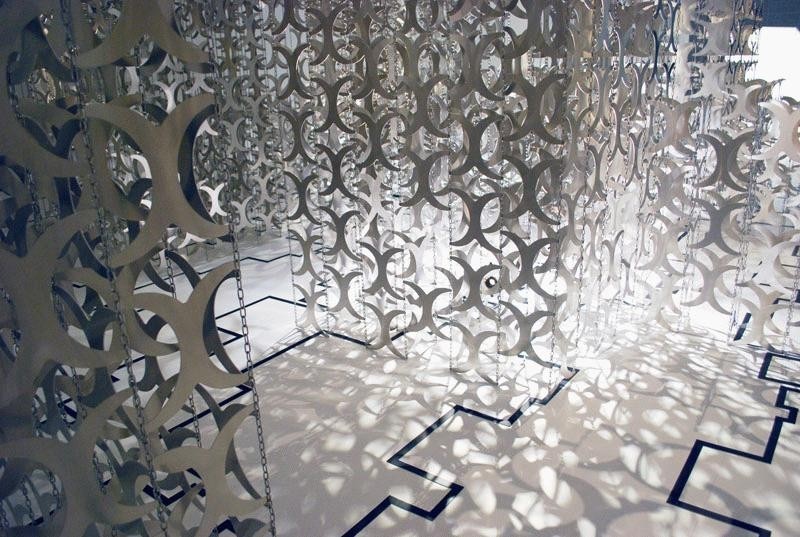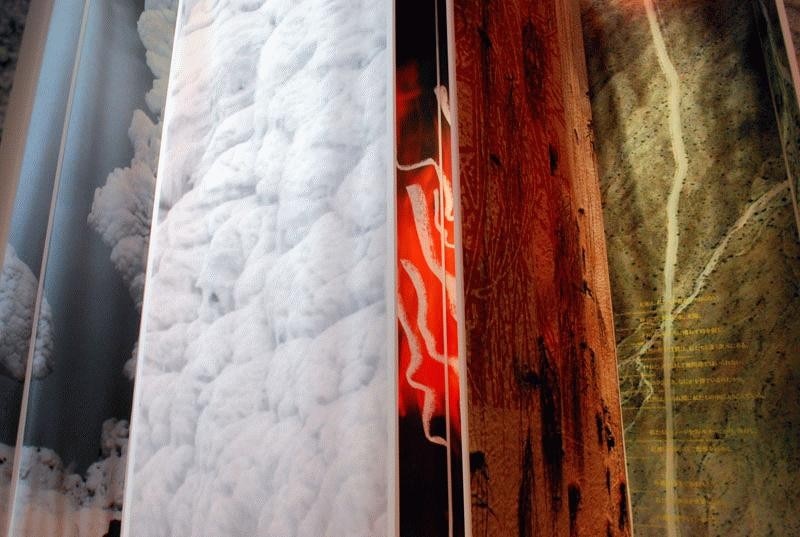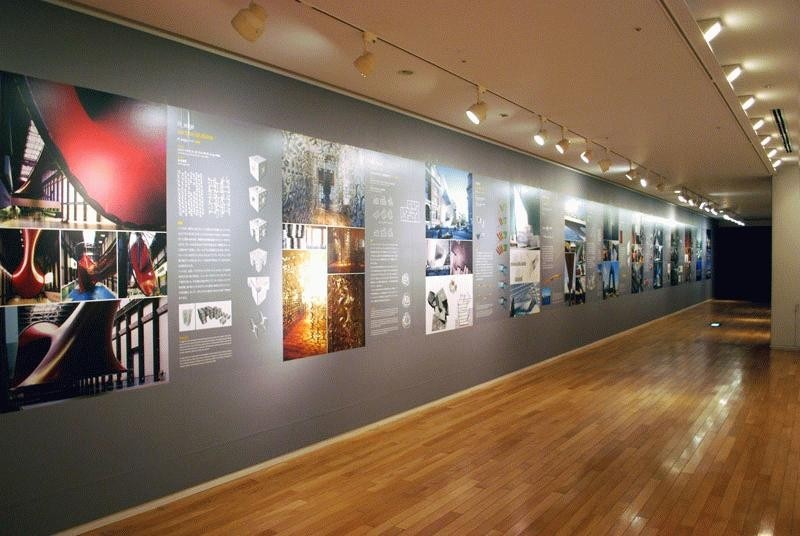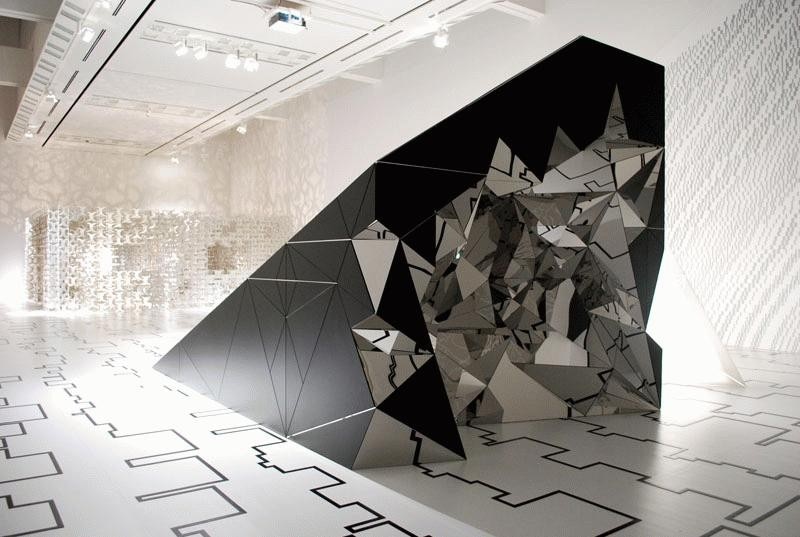January 16 - March 22, 2010
Section 1: Seeking hidden rhythms
Almost no formal plans or models will be found in this exhibition. Balmond fills the start of the exhibition site with many photographs and drawings with the intention of creating an exhibition that hones each visitor’s senses and makes him or her think of using their body, rather than gaining understanding by reading information. With an eye on the nature around him, Balmond finds the underlying order and rhythm that resides within nature—not just its superficial beauty—and develops that into geometry. Although based on simple rules, the nature that surrounds us displays amazing richness and complexity. Take, for example, the way a tree grows by recursively branching outwards or the way the veins of a leaf spread out to cover every nook and cranny. Adopting Balmond’s point of view that nature has been wonderfully designed from the outset, Gallery 1 allows visitors to experience the elements of nature and enjoy the beautiful rhythms hidden deep within it.
Section 2: Architecture that continues to develop
Designing the underlying mechanisms
To architecture, structure provides the organisational model that supports the building, and elements - the muscles - that distribute or shake off the impacts incurred during an earthquake. The purpose of traditional structural design is to strengthen a building by a skeleton. But, Balmond’s designs impart fluidity and flexibility. Instead of being unmoving, provide the entire structure with an overflowing kinetic energy. But how does he do this? While being influenced by external factors such as the surrounding environment, of nature grows into unique organisms in accordance with the rhythms embedded in their genetic code. Balmond believes the same thing can be applied to architecture. He poses the question of whether it is possible to create rich architecture that grows naturally out of his own codes, responding flexibly to complex factors and conditions. Balmond’s job is not to design details, but rather to design the very structure that brings a building to life. Gallery 2 showcases Balmond’s installations of new space on an architectural scale with large works like H_edge and Danzer, allowing visitors to experience his method of breathing life into constructs through the entire gallery space.
Section 2: Danzer and H–edge
H_edge
This three-dimensional work consists solely of H-shaped aluminum plates and chains. Unable to stand on their own, the plates and chains combine together in a regular way to support each other, creating a labyrinth space of seemingly infinite scale, extending both within and without.
Danzer
Danzer is a giant, three-dimensional puzzle. Close examination reveals that it is made up of only four kinds of tetrahedrons, each of which in turn is embedded with miniature versions of these four tetrahedrons. Nature abounds with these kinds of fractal forms, from the shape of coastlines to the branching of trees.
Section 3: Collaboration with architects
World-famous architects are keen to collaborate with Balmond, who is highly acclaimed as someone who doesn’t just give form to architects’ ideas, but propels projects to new innovative heights, drawing out potential from architects that they themselves didn’t even know they had. The structures he creates—many of them going on to constitute the eventual architectural design-represent rare examples of collaboration between architects and structural designers on a level that transcends traditional boundaries. Showcasing Balmond’s creative collaborations with architects through photographs, drawings, and text, Section 3 introduces examples of actual projects that represent his ideas. Balmond’s own work on recent bridges and projects in Taichung and The Emirates proposes new insights into the totality of architecture.
